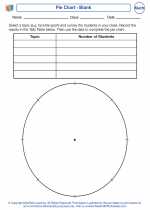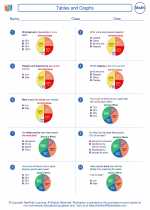Irrational Numbers
An irrational number is a number that cannot be expressed as a fraction of two integers and its decimal representation goes on forever without repeating. In other words, it cannot be written as a simple fraction.
Characteristics of Irrational Numbers
- Cannot be expressed as a simple fraction
- Have non-repeating, non-terminating decimal representations
- Examples include: √2, π (pi), and e (Euler's number)
Representations of Irrational Numbers
Irrational numbers can be represented in different forms, such as:
Examples of Irrational Numbers
Some common examples of irrational numbers are:
- √2 ≈ 1.41421356...
- π (pi) ≈ 3.14159265...
- e (Euler's number) ≈ 2.71828183...
Study Tips for Understanding Irrational Numbers
To better understand irrational numbers, consider the following study tips:
- Practice estimating the values of irrational numbers using their decimal approximations.
- Explore the concept of square roots and their connection to irrational numbers.
- Use visual aids, such as number lines and geometric representations, to illustrate irrational numbers.
- Compare and contrast irrational numbers with rational numbers to understand their differences.
◂Math Worksheets and Study Guides Fourth Grade. Tables and Graphs
Study Guide Tables and Graphs
Tables and Graphs  Activity Lesson
Activity Lesson Pie Chart - Blank
Pie Chart - Blank  Activity Lesson
Activity Lesson Classroom Chaos
Classroom Chaos  Activity Lesson
Activity Lesson Mary`s Many Movements
Mary`s Many Movements  Worksheet/Answer key
Worksheet/Answer key Tables and Graphs
Tables and Graphs  Worksheet/Answer key
Worksheet/Answer key Tables and Graphs
Tables and Graphs  Worksheet/Answer key
Worksheet/Answer key Tables and Graphs
Tables and Graphs  Worksheet/Answer key
Worksheet/Answer key Tables and Graphs
Tables and Graphs  Worksheet/Answer key
Worksheet/Answer key Tables and Graphs
Tables and Graphs  Worksheet/Answer key
Worksheet/Answer key Tables and Graphs
Tables and Graphs  Worksheet/Answer key
Worksheet/Answer key Student Pictograph
Student Pictograph  Worksheet/Answer key
Worksheet/Answer key Line Plot - Fundraiser
Line Plot - Fundraiser  Worksheet/Answer key
Worksheet/Answer key Pie Chart - After-School Activities
Pie Chart - After-School Activities 

 Activity Lesson
Activity Lesson
 Activity Lesson
Activity Lesson
 Activity Lesson
Activity Lesson
 Worksheet/Answer key
Worksheet/Answer key
 Worksheet/Answer key
Worksheet/Answer key
 Worksheet/Answer key
Worksheet/Answer key
 Worksheet/Answer key
Worksheet/Answer key
 Worksheet/Answer key
Worksheet/Answer key
 Worksheet/Answer key
Worksheet/Answer key
 Worksheet/Answer key
Worksheet/Answer key
 Worksheet/Answer key
Worksheet/Answer key
 Worksheet/Answer key
Worksheet/Answer key

The resources above cover the following skills:
DATA ANALYSIS
Interpret data displayed in a circle graph.